Hello,
My name is Mr. Linen.
I’m a big fan of the JM Weston Signature Loafer #180. Since they’re quite expensive, I can’t afford to buy them at full price, so I’ve been slowly collecting pre-owned pairs in good condition.
Currently, I own three pairs: tan brown and blue in calf leather, and black in suede.
They’re all the same size (7C), but the shape of the uppers differs slightly. The blue and black suede pairs are almost identical in shape, while the tan brown pair looks a bit different.
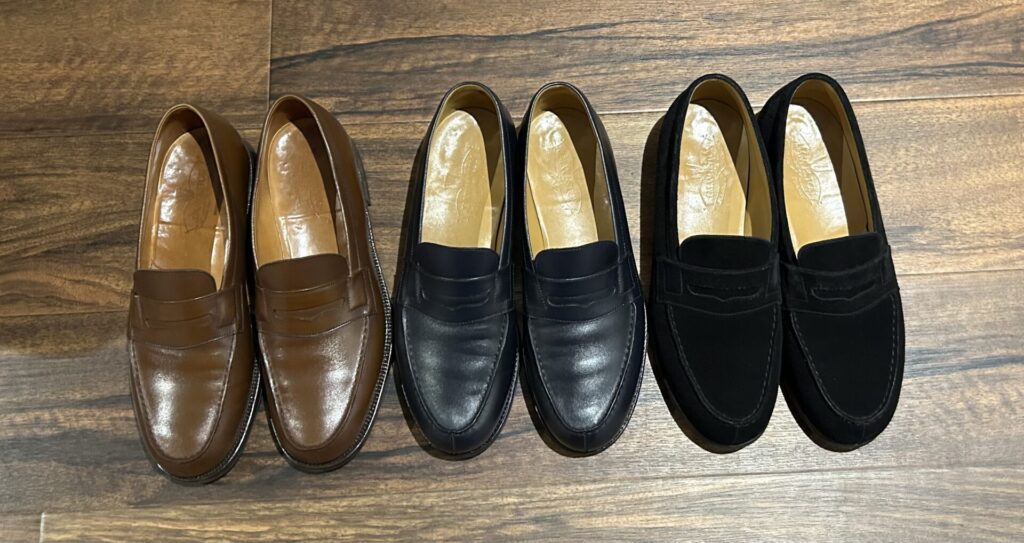
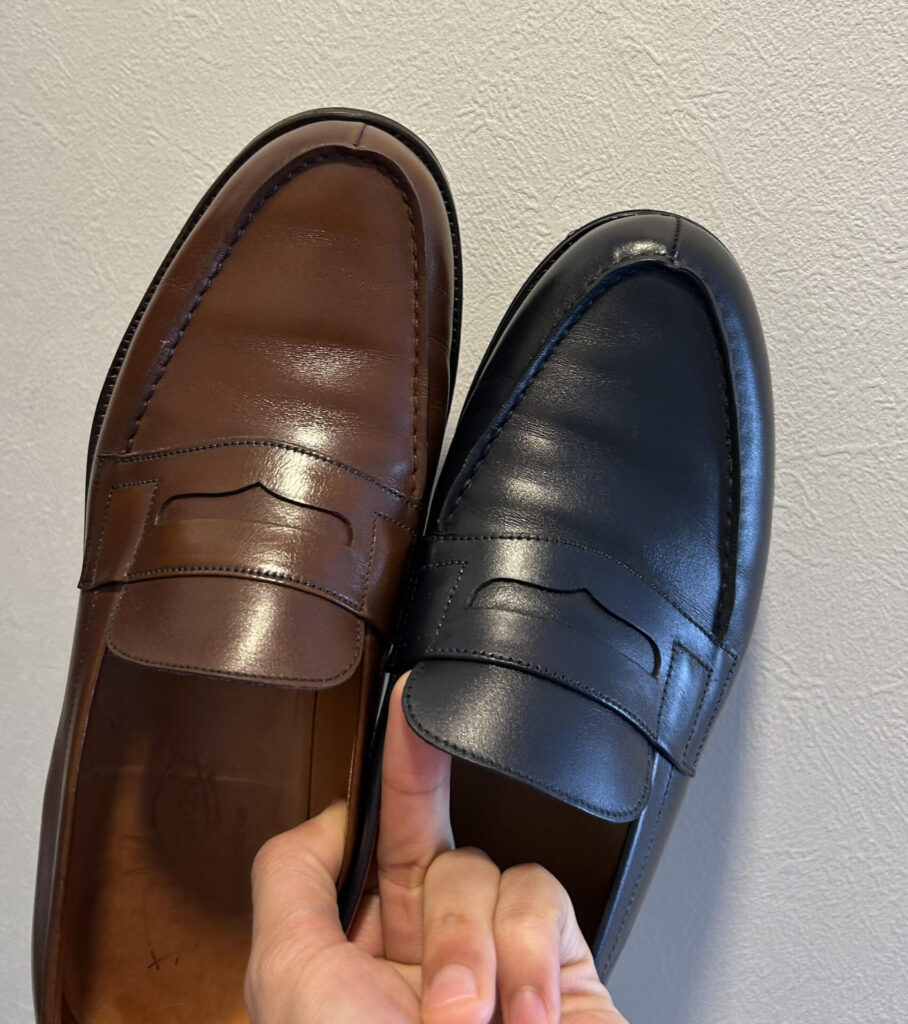
Compared to the current blue and black suede models, the vintage tan brown has a more rounded toe and a tongue that protrudes more, giving it a different overall silhouette.
This is likely due to differences in the production period.
The tan brown pair is relatively old, featuring what’s known as the ‘old-old’ logo, whereas the blue and black suede pairs have the current logo (as of February 2025). I apologize if I’m mistaken.
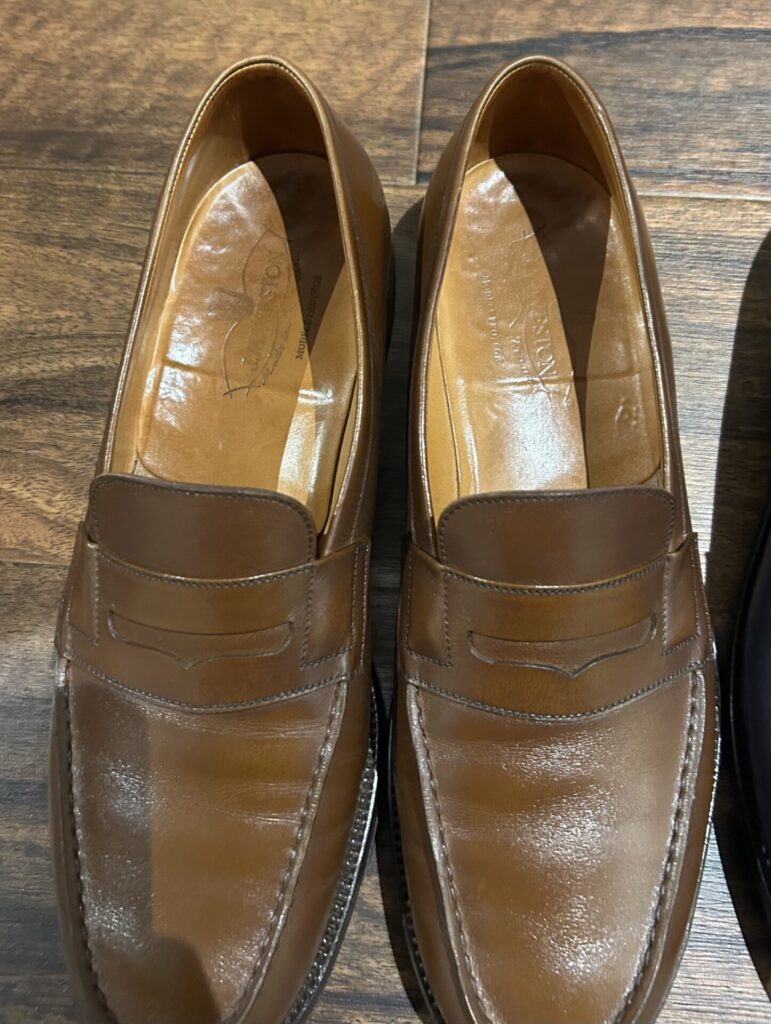
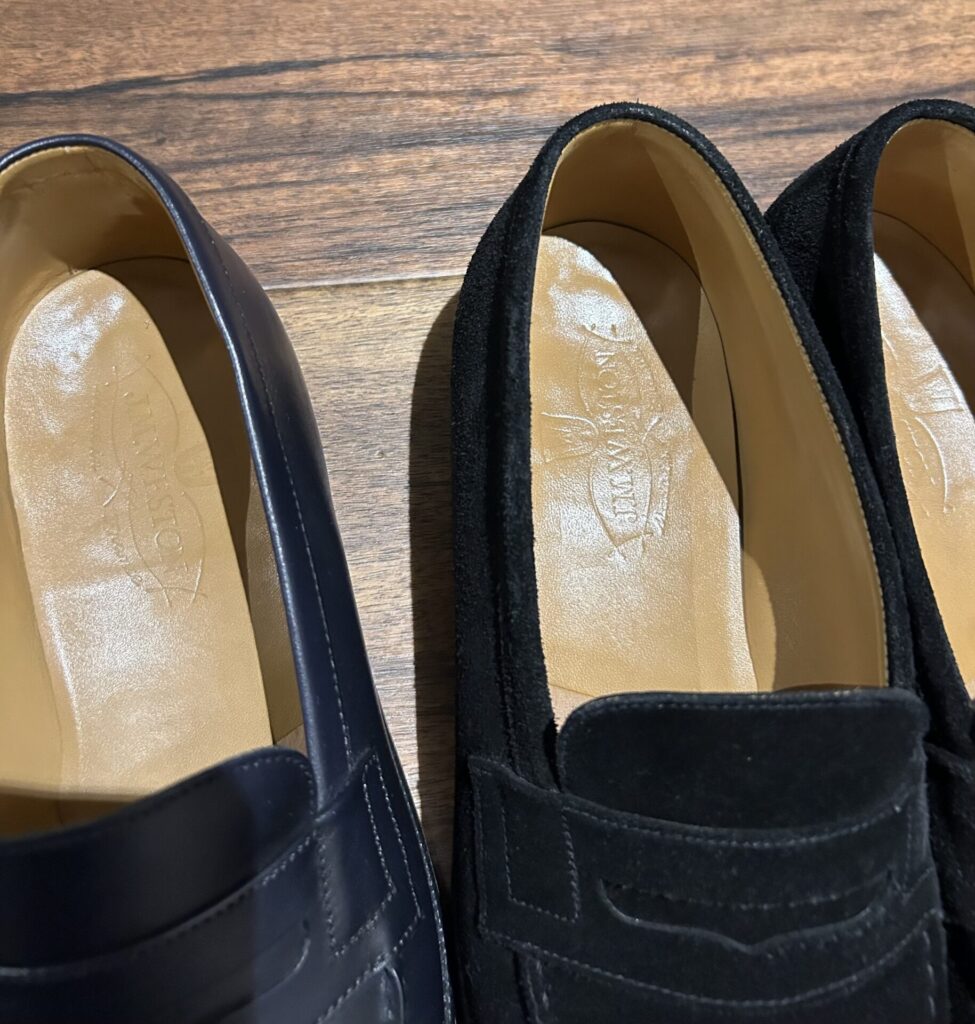
While the differences are subtle, perhaps the lasts were updated over time.
Of course, this could be attributed to individual variation rather than age, but it’s hard to believe that JM Weston would produce such inconsistent shoes that even amateurs could easily notice the differences.
This observation is based on a top-down view.
Looking from the side reveals even more differences.
Volume—specifically, the height of the toe box and instep—varies between pairs.
The vintage tan brown pair has a lower toe box and instep, while the two current models are relatively higher, giving them more volume.

Perhaps this photo makes it clearer. The vintage pair is in the middle, and the current models are on both sides.
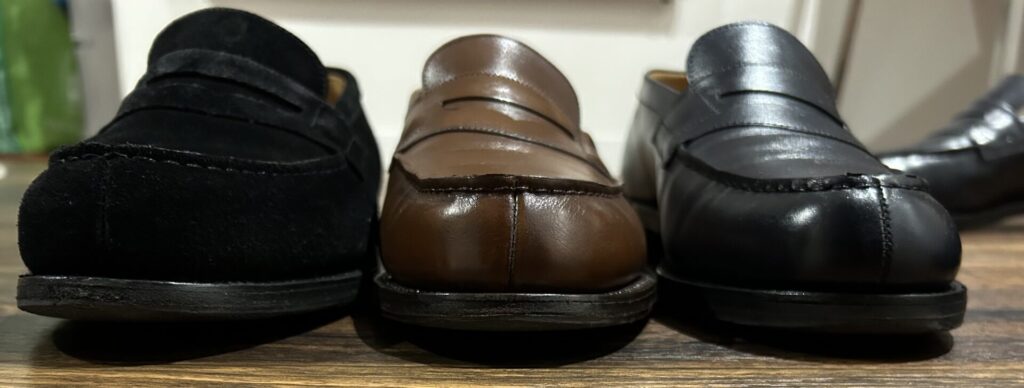
Let’s change the angle a bit.
While the curvature of the soles differs between the two current pairs, their volume appears similar.

Comparing the current and vintage pairs, the vintage tan brown pair has a more curved sole, yet the top of the toe box is either at the same height or even slightly lower.

This suggests that, excluding the sole, the upper of the vintage pair is lower.
Now, let’s measure the circumference.
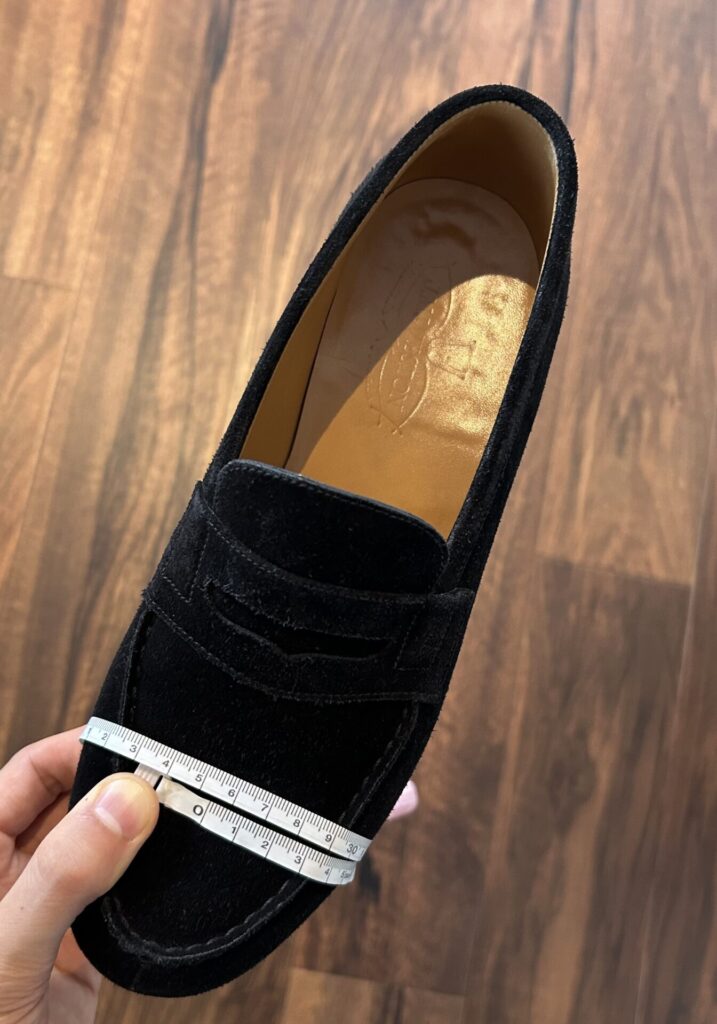
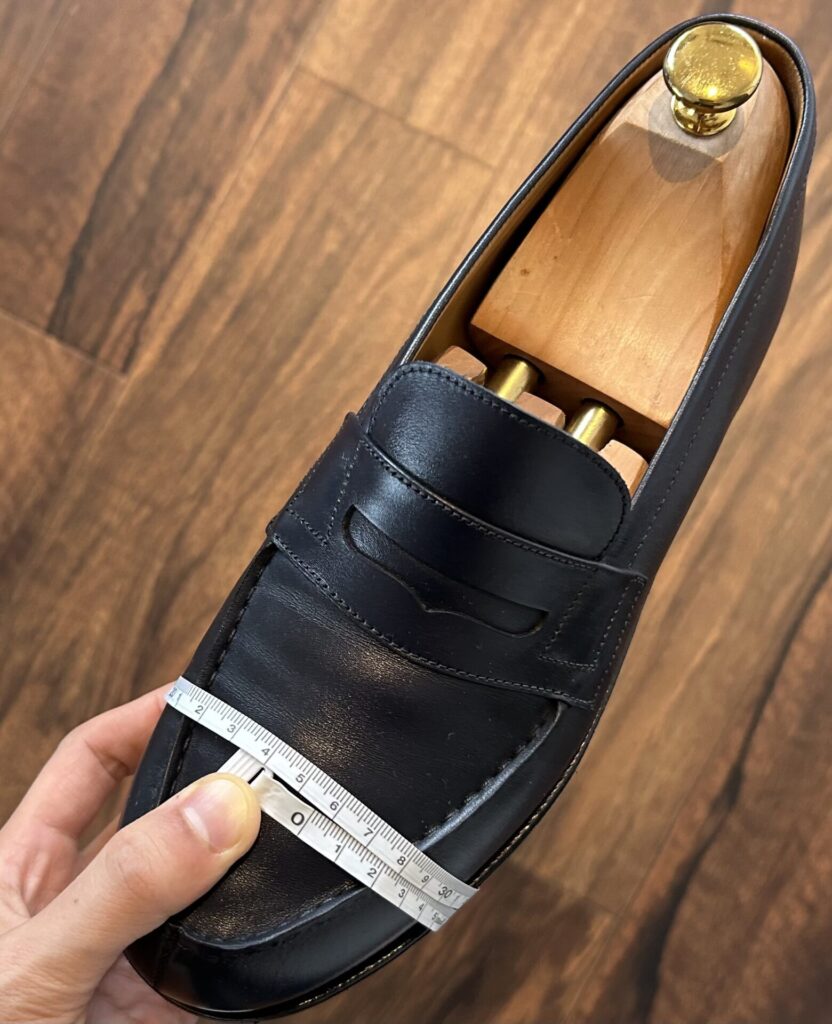
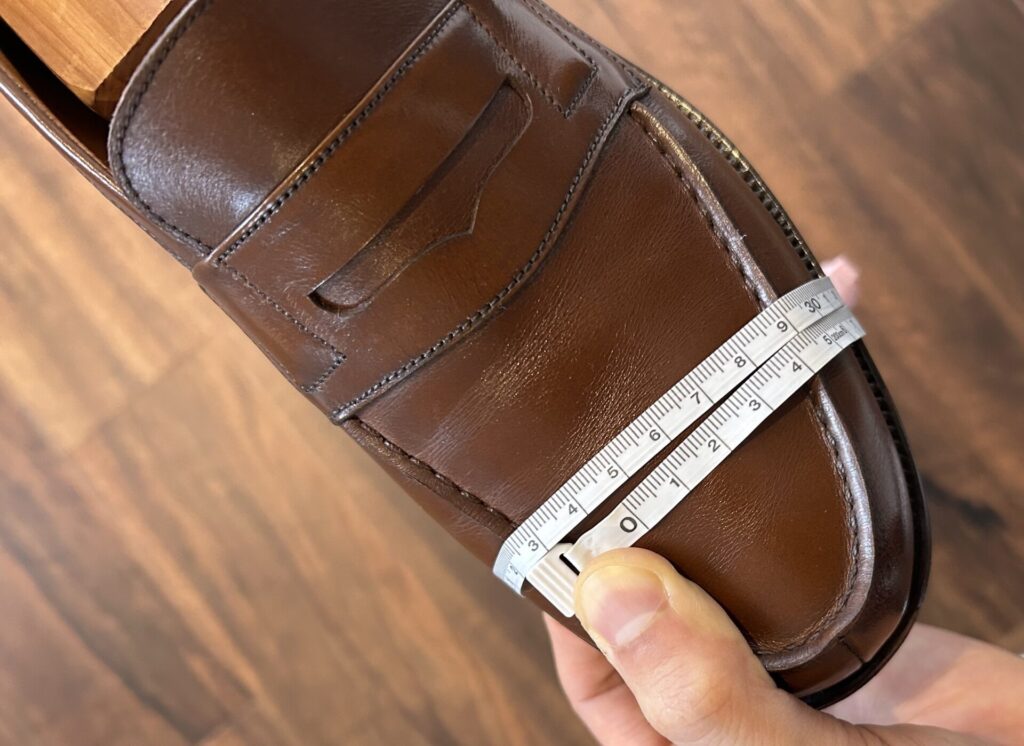
Only the vintage tan brown has a circumference about 1 cm smaller.
Even accounting for possible measuring errors, there’s at least a 5 mm difference—roughly half a size.
In actual wear, the two current models feel comfortable even after a full day, but the vintage tan brown pair becomes tight and painful around the instep by the evening.
This clearly shows a difference in instep height.
Though tight on the instep, the vintage pair fits perfectly from the ball of the foot to the toes, giving an elegant and snug appearance due to its lower profile.
Even from a distance in wearing photos, doesn’t the volume look different?
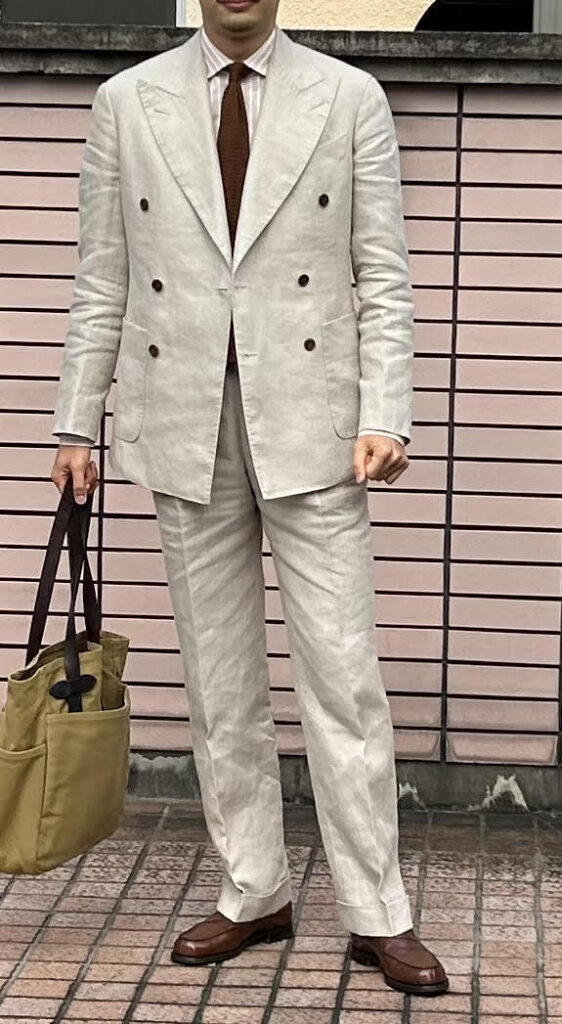
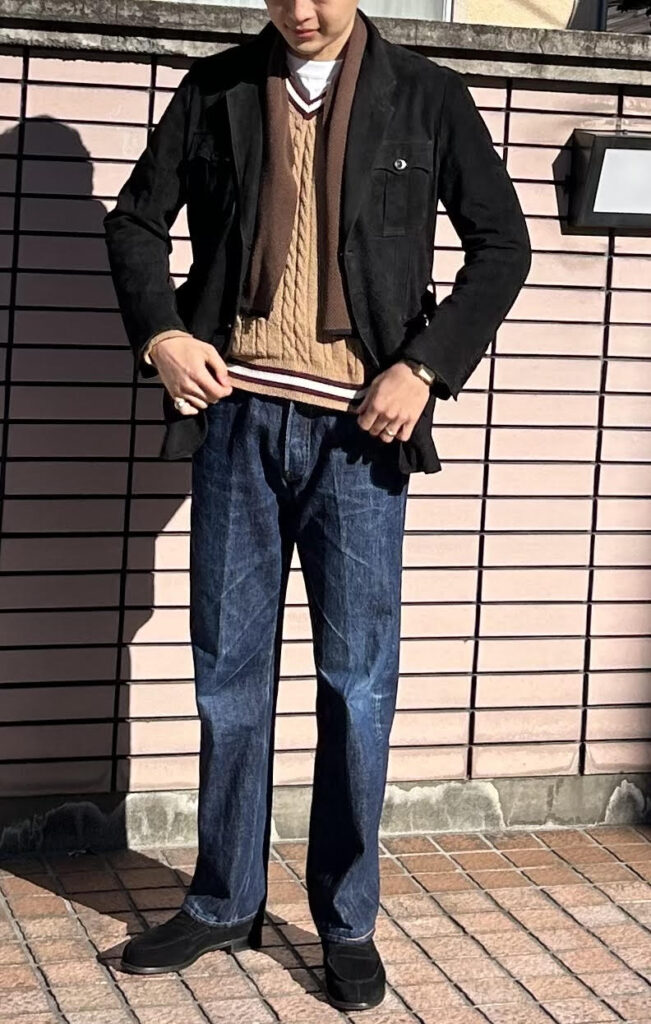
Next, let’s look at the welt protrusion.

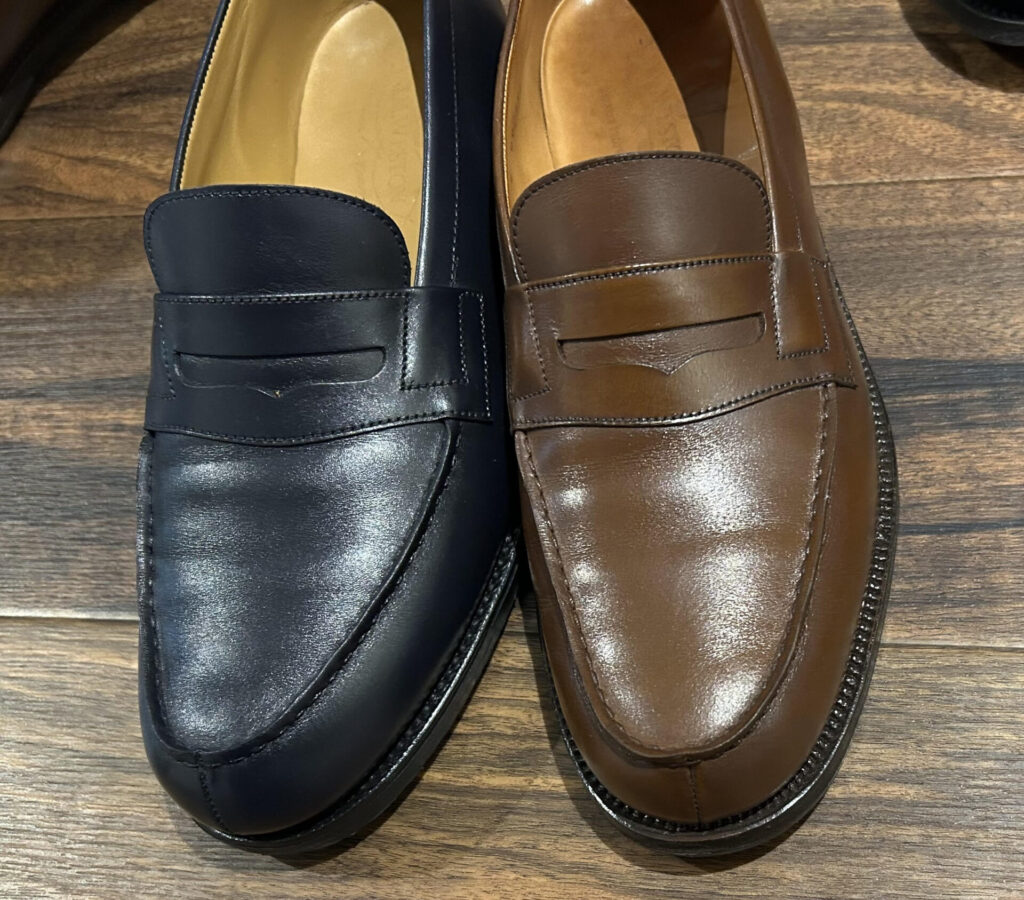
It might be hard to see, but the vintage tan brown pair has a more pronounced welt.
Even though a protruding welt should mean a longer circumference, the vintage pair still measures smaller overall.
This means the upper must be lower to compensate.
Earlier, I said there’s about a half-size difference—but it might be closer to a full size.
Finally, let’s talk about leather quality, which is unrelated to sizing.
Since it’s unfair to compare calf and suede, I’ll focus on the two calf leather pairs.
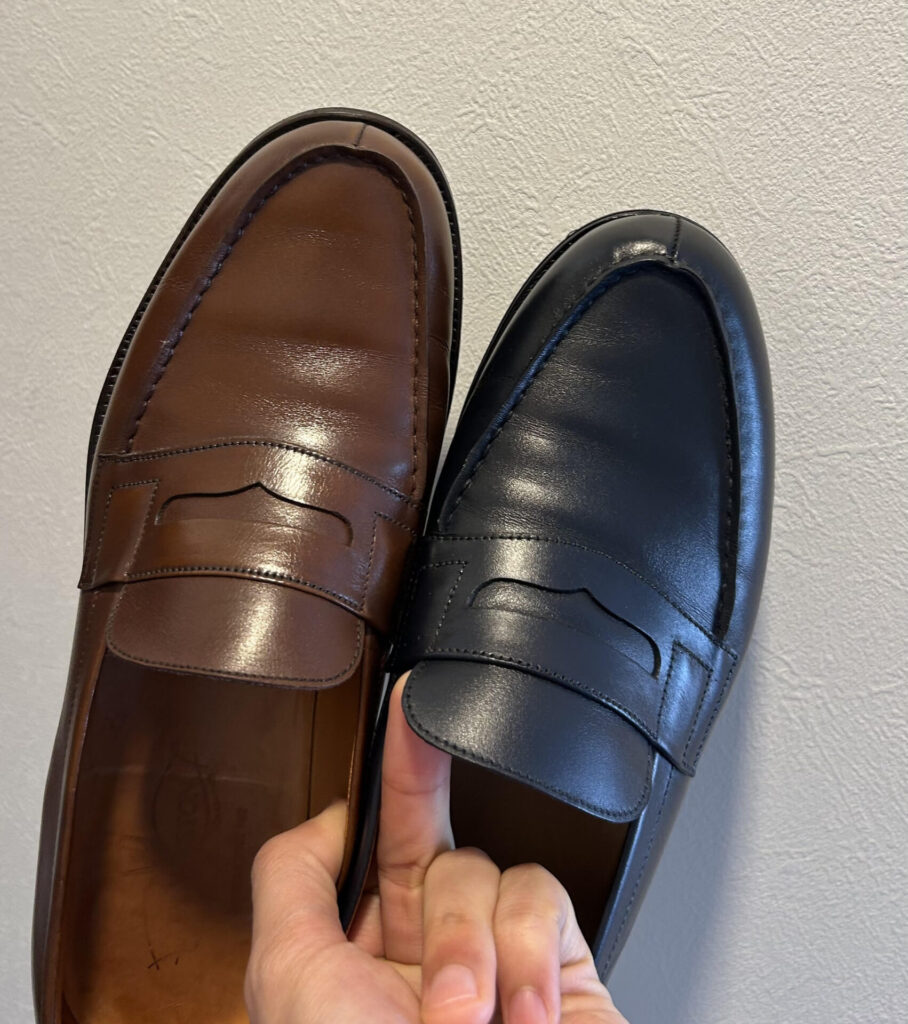

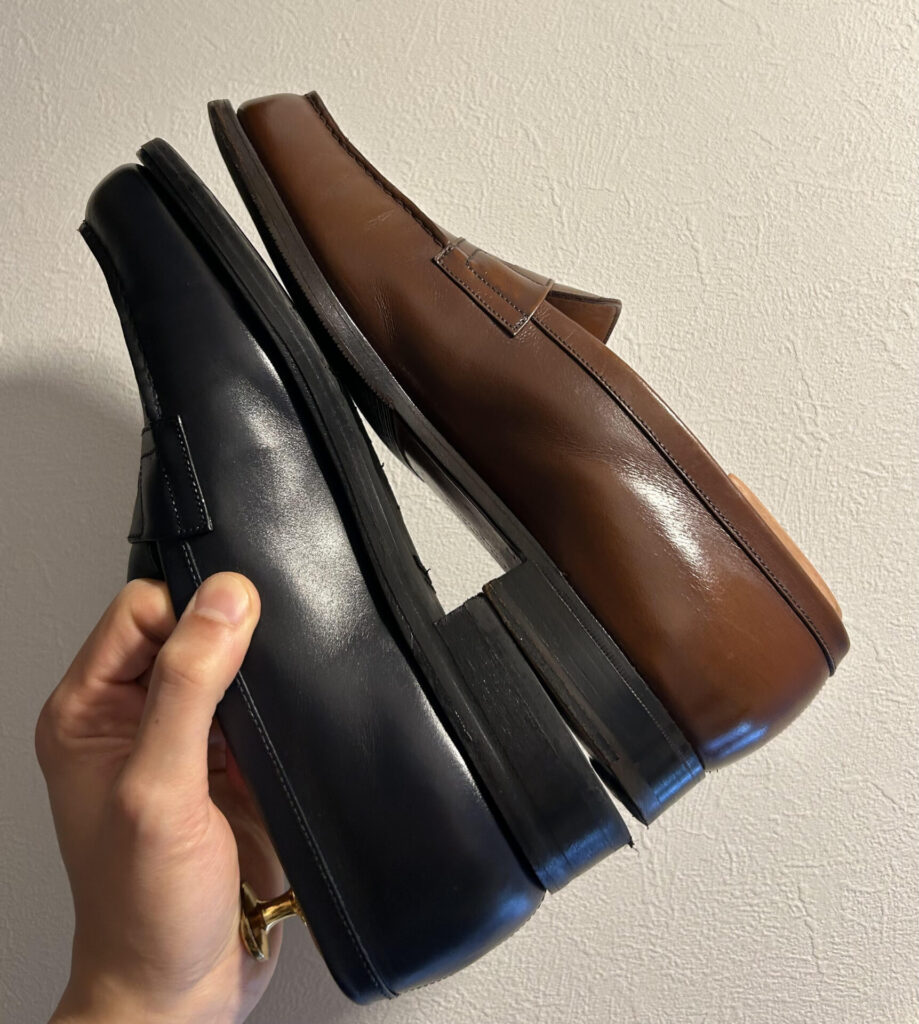
People often say vintage leather is better—how do you feel when comparing the vintage tan brown to the current blue pair?
The vintage tan brown has noticeably more gloss. For the record, I treat both pairs in exactly the same way.
It’s hard to say if more gloss means better quality, but if we assume that easier shine = fewer surface irregularities = finer grain, then maybe it’s true that vintage leather is of higher quality.
Personally, I prefer the more matte finish of the blue pair, so I’m not particularly drawn to higher gloss.
These are the differences I noticed when comparing current and vintage JM Weston pairs.
If you know of other differences, I’d love to hear them.
That’s all—thank you!
Reference article in Japanese




コメント